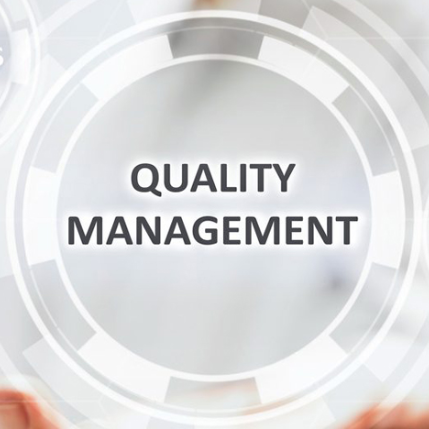Description
Six Sigma Yellow Belt Details
The “Six Sigma Yellow Belt” course is tailored to help anyone interested to know what Six Sigma is; learn key concepts in Six Sigma; and to get a basic understanding of how Six Sigma framework works in delivering successful projects. This course is included as a part of Free Lifetime Primary Membership. Once the course is completed, the student need to take an assessment to get the certificate. The purpose of the exam is to confirm you have basic understanding of Six Sigma.
Exam Format
- Multiple Choice
- 40 questions for the exam
- One mark awarded for every right answer
- No negative marks for wrong answers
- 60 minutes duration
- 28 questions need to be answered correctly to pass
- Online un-proctored exam
Methodologies
There are mainly two methodologies of Six Sigma namely DMAIC and DMADV.
DMAIC is a data-driven Six Sigma methodology for improving existing products and processes.
The DMAIC process should be used when an existing product or process can be improved to meet or exceed the customer’s requirements.
DMAIC methodology consists of five phases: D – Define, M – Measure, A – Analyze, I – Improve, C – Control.
- Define – Define the project targets and customer (internal and external) deliverables.
- Measure – Measure the process to determine the current process performance (baseline).
- Analyze – Find out the root causes of the defects.
- Improve – Improve the process by eliminating defects.
- Control – Control the future performance.
DMADV is a common DFSS (Design for Six Sigma) methodology used to develop a process or product which does not exist in the company. DFSS is an application of Six Sigma which focuses on the design or redesign of the different processes used in product manufacturing or service delivery by taking into account the customer needs and expectations.
DMADV is used when the existing product or process does not meet the level of customer specification or Six Sigma level even after optimization with or without using DMAIC.
DMAIC methodology consists of five phases: D – Define, M – Measure, A – Analyze, D – Design, V – Validate.
- DEFINE the project goals and customer deliverables
- MEASURE the process to determine the current performance level
- ANALYZE and determine the root causes of the defects
- DESIGN the process in detail to meet customer needs
- VALIDATE the design performance and its ability to meet the customer needs
Characteristics
- Customer centric
- Process focused
- Data driven
- Involvement and support of the top management
- Cultural change
- Breakthrough performance gains
- Structured improvement deployment
- Validation through key business results
- Reduction in variation
- Elimination of defects
- Improvement in yield
- Enhancement in customer satisfaction
- Strengthening of the bottom line
Six Sigma vs Traditional Quality
| Six Sigma | Traditional Quality |
|---|---|
| Decisions are driven by data | Decisions are taken based on a combination of data and ‘gut feel’. |
| Control process inputs (Focus on X’s) | Inspection method (Focus on Y) |
| Structured use of statistical tools to help in problem solving | No formal structure exists for the application of tools |
| Structured training in applied statistics | Lack of structured training |
| Root cause approach | Band aid approach |
| Prevention over inspection | Inspection over prevention |
Mobile App
The “VMEdu” Mobile App allows all its registered students for its several brands to study using mobile phones and tablets. Students can use this mobile app to access their courses, view videos and study guides, understand and memorize terms & concepts using flash-cards, practice test questions and use other features of the mobile app to enhance their learning.
- The Mobile app seamlessly complements the online experience of students who might also be using computers or laptops for their study.
- Download the FREE VMEdu Mobile app on your mobile (iOS or Android) and start studying using your smart phone.
- The app comes in very handy for busy professionals to go through videos, tests and lessons anytime, anywhere!
————————————————————————————————————————————
Six Sigma Green Belt Details
“Six Sigma Green Belt” course focuses on providing students with an understanding of the various Six Sigma tools and techniques useful to improve the production process and minimize defects in the end product with a greater focus on the practical implementation of these tool and techniques in the organization.
Exam Format
- Multiple Choice
- 90 questions per exam
- One mark awarded for every right answer
- No negative marks for wrong answers
- 120 minutes duration
- Proctored online exam
Key Features
- 6 months access
- Expert tutor support
- Fully mobile compatible
- 2 Examination Retakes Voucher
- Physical Books
- Exam simulator & revision modules
- Increase your earning potential by 25%
- PMI Pdu’s (Professional development units)
- Six Sigma Yellow Belt Training and Examination
- Six Sigma Green Belt Training and Examination
Study Material
- SSGB Student Workbook 83 pages – A comprehensive workbook covering syllabus areas concerned with Six Sigma Green Belt. The workbook covers topics on DMAIC and exercises to ensure proper understanding of the concepts.
- SSGB Chapter Test 34 pages Total no. of questions: 80 – All of the questions are multiple choice with 4 options. Answers to these questions are also provided, along with justifications and references.
- SSGB Student Role Play 22 pages – The role play takes students through the different phases of DMAIC cycle using a real-life scenario.
- SSGB Student Exercise Book 22 pages – The booklet is meant to allow candidates to practise exercises on concepts taught during training.
- SSGB Student Case Study Question 12 pages – Includes a scenario using which Six Sigma Concepts are discussed and questions posed.
- SSGB Student Case Study Answer 16 pages – Includes answer and justifications to questions discussed in the Case Study. Allows candidates to go through the justifications and understand the rationale given for each of the answers.
- SSGB M and M Grid 1 pages
Certification Hierarchy
Sigma study certified professionals help organizations with improved level of processes and quality outputs that lead to increased ROI. They have knowledge pertaining to and can anticipate issues related to the practical implementation of Six Sigma.
The diagram below shows you what is the preferred as well as optional certification to move to a next level.
Methodologies
There are mainly two methodologies of Six Sigma namely DMAIC and DMADV.
DMAIC is a data-driven Six Sigma methodology for improving existing products and processes. The DMAIC process should be used when an existing product or process can be improved to meet or exceed the customer’s requirements. DMAIC methodology consists of five phases: D – Define, M – Measure, A – Analyze, I – Improve, C – Control.
- Define – Define the project targets and customer (internal and external) deliverables.
- Measure – Measure the process to determine the current process performance (baseline).
- Analyze – Find out the root causes of the defects.
- Improve – Improve the process by eliminating defects.
- Control – Control the future performance.
DMADV is a common DFSS (Design for Six Sigma) methodology used to develop a process or product which does not exist in the company. DFSS is an application of Six Sigma which focuses on the design or redesign of the different processes used in product manufacturing or service delivery by taking into account the customer needs and expectations. DMADV is used when the existing product or process does not meet the level of customer specification or Six Sigma level even after optimization with or without using DMAIC. DMAIC methodology consists of five phases: D – Define, M – Measure, A – Analyze, D – Design, V – Validate.
- DEFINE the project goals and customer deliverables
- MEASURE the process to determine the current performance level
- ANALYZE and determine the root causes of the defects
- DESIGN the process in detail to meet customer needs
- VALIDATE the design performance and its ability to meet the customer needs
Mobile App
The “VMEdu” Mobile App allows all its registered students for its several brands to study using mobile phones and tablets. Students can use this mobile app to access their courses, view videos and study guides, understand and memorize terms & concepts using flash-cards, practice test questions and use other features of the mobile app to enhance their learning.
- The Mobile app seamlessly complements the online experience of students who might also be using computers or laptops for their study.
- Download the FREE VMEdu Mobile app on your mobile (iOS or Android) and start studying using your smart phone.
- The app comes in very handy for busy professionals to go through videos, tests and lessons anytime, anywhere!
————————————————————————————————————————————
Six Sigma Black Belt Details
“Six Sigma Black Belt” certification focuses on testing students on their comprehensive understanding of the various Six Sigma tools and techniques. The objective of the online value added course (complementary with certification exam) is to develop a comprehensive knowledge base that helps students to function effectively as a Six Sigma Black Belt in various projects. The tools and techniques cover both quantitative and non-quantitative analysis along with other necessary knowledge to improve the production process and minimize defects in the end product with a greater focus on the practical implementation of these tool and techniques in the organization.
Exam Format
- Multiple Choice
- 125 questions per exam
- One mark awarded for every right answer
- No negative marks for wrong answers
- 180 minutes duration
- Proctored online exam
Key Features
- 6 months access
- Expert tutor support
- Fully mobile compatible
- 2 Examination Retakes Voucher
- Exam simulator & revision modules
- Exam simulator & revision modules
- Increase your earning potential by 25%
- PMI Pdu’s (Professional development units)
- Six Sigma Yellow Belt Training and Examination
- Six Sigma Green Belt Training and Examination
Study Material
SSBB Student Workbook: 332 pages – Comprehensive workbook that helps students to function effectively as a Six Sigma Black Belt in various projects. The tools and techniques cover both quantitative and non-quantitative analysis along with other necessary knowledge to improve the production process and minimize defects in the end product with a greater focus on the practical implementation of these tool and techniques in the organization.
Certification Hierarchy
“6sigmastudy” certified professionals help organizations with improved level of processes and quality outputs that lead to increased ROI. They have knowledge pertaining to and can anticipate issues related to the practical implementation of Six Sigma.
The diagram below shows you what is the preferred as well as optional certification to move to a next level.
Methodologies
There are mainly two methodologies of Six Sigma namely DMAIC and DMADV.
DMAIC is a data-driven Six Sigma methodology for improving existing products and processes. The DMAIC process should be used when an existing product or process can be improved to meet or exceed the customer’s requirements. DMAIC methodology consists of five phases: D – Define, M – Measure, A – Analyze, I – Improve, C – Control.
- Define – Define the project targets and customer (internal and external) deliverables.
- Measure – Measure the process to determine the current process performance (baseline).
- Analyze – Find out the root causes of the defects.
- Improve – Improve the process by eliminating defects.
- Control – Control the future performance.
DMADV is a common DFSS (Design for Six Sigma) methodology used to develop a process or product which does not exist in the company. DFSS is an application of Six Sigma which focuses on the design or redesign of the different processes used in product manufacturing or service delivery by taking into account the customer needs and expectations. DMADV is used when the existing product or process does not meet the level of customer specification or Six Sigma level even after optimization with or without using DMAIC. DMAIC methodology consists of five phases: D – Define, M – Measure, A – Analyze, D – Design, V – Validate.
- DEFINE the project goals and customer deliverables
- MEASURE the process to determine the current performance level
- ANALYZE and determine the root causes of the defects
- DESIGN the process in detail to meet customer needs
- VALIDATE the design performance and its ability to meet the customer needs
Mobile App
The “VMEdu” Mobile App allows all its registered students for its several brands to study using mobile phones and tablets. Students can use this mobile app to access their courses, view videos and study guides, understand and memorize terms & concepts using flash-cards, practice test questions and use other features of the mobile app to enhance their learning.
- The Mobile app seamlessly complements the online experience of students who might also be using computers or laptops for their study.
- Download the FREE VMEdu Mobile app on your mobile (iOS or Android) and start studying using your smart phone.
- The app comes in very handy for busy professionals to go through videos, tests and lessons anytime, anywhere!




Reviews
There are no reviews yet.